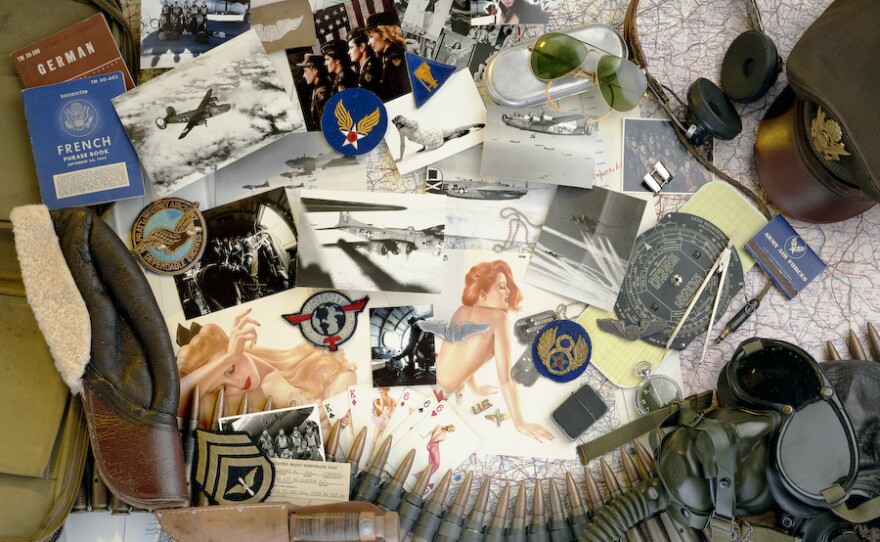Seventy years ago, World War 2 was in full cry. American was in combat across the Atlantic and Pacific Oceans. In Europe, during 1943, the US Army Air Force was engaged against Hitler's Germany. The fall was a crucial time for battle, and October was a cruel month.
Defeating an enemy only with air power was experimental back then. The American plan was this: equip large bomber with heavy machine guns, fly them in a tight formation with hundreds of identical planes and no long range fighters as escorts. Could it work?
Aircrews were being trained as fast as possible. Young men just out of high school were in command of large bombers with nine other young men under their command. A steady stream of those aircraft were being sent to England and assigned to bomber groups. There were some perfunctory flights to familiarize the men with the mission to learn the finer points of flying in really close formation - and then within weeks of days they were sent into aerial combat over Germany.

German fighter planes were very fast, heavily armed and they had tenacious, time-tested combat methods.
The results were catastrophic.
The German pilots found the soft spots in the big formations of American bombers, sliced through the dense clouds of bullets, and American bombers fell from the sky. Each plane carried ten men. A mission that lost 20 or 30 bombers meant 200 or 300 deaths.
American military planners responded with command changes, but stuck to their plan, believing that the bombers would always get through. And while that was true, the price was very high. The Eighth Air Force, tasked to carry the aerial offensive against the Nazi's, suffered 35,000 dead.
The heroism of the men who were flying and fighting and dying is legendary.
In October 1943, bombers and crews were sent flying even deeper into Germany. Their mission: to attack the industries that built the German air force and defeat the enemy by destroying their resources.
But that concept was flawed, too. Buildings were destroyed and success was often measured in square footage of roofs blown off, but the heavy machine tools that were the real targets could be brushed off, moved to a new location and put back in production.
In one week, US bombers visited Munster, Schwienfurt and Bremen, German industrial cities, but the American losses were stunning. 1,200 men died and thousands were wounded. They never stopped attacking Germany, but they did not often go as deep into the German industrial heartland.
American planners realized that the bomber force needed escorting fighters who could duel with the German Luftwaffe pilots on even terms. But there was no American fighter plane ready for that task, but the P-51 Mustang was in production. It wouldn't be available until early 1944.
The battle for control of the air raged on through the fall 70 years ago. The plans for the invasion of Europe in the spring of 1944 hinged on aerial supremacy.
The next few month would prove to be critical.
Dan Patterson is an aviation historian and photographer. You can see more of his photos at his website, www.flyinghistory.com
Aviation programming on WYSO is supported in part by the National Aviation Heritage Alliance and The Air Force Museum Foundation.


















